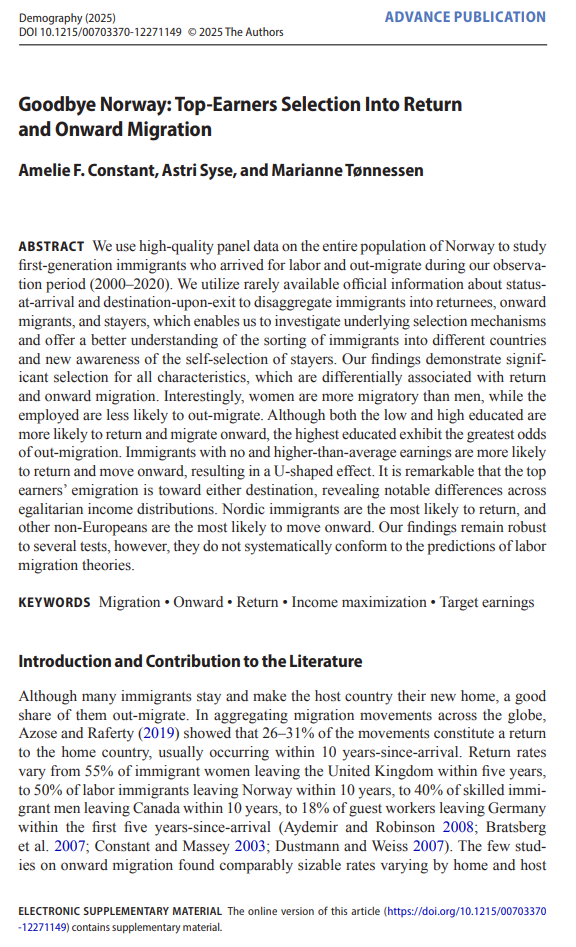
Goodbye Norway: Top-Earners Selection Into Return and Onward Migration (Demography 2025)
In this paper, we use high-quality panel data on the entire population of Norway to study first-generation immigrants who arrived for labor and out-migrate during our observation period (2000‒2020). We utilize rarely available official information about status-at-arrival and destination-upon-exit to disaggregate immigrants into returnees, onward migrants, and stayers, which enables us to investigate underlying selection mechanisms and offer a better understanding of the sorting of immigrants into different countries and new awareness of the self-selection of stayers. Our findings demonstrate significant selection for all characteristics, which are differentially associated with return and onward migration. Interestingly, women are more migratory than men, while the employed are less likely to out-migrate. Although both the low and high educated are more likely to return and migrate onward, the highest educated exhibit the greatest odds of out-migration. Immigrants with no and higher-than-average earnings are more likely to return and move onward, resulting in a U-shaped effect. It is remarkable that the top earners’ emigration is toward either destination, revealing notable differences across egalitarian income distributions. Nordic immigrants are the most likely to return, and other non-Europeans are the most likely to move onward. Our findings remain robust to several tests, however, they do not systematically conform to the predictions of labor migration theories. Read the full paper here.
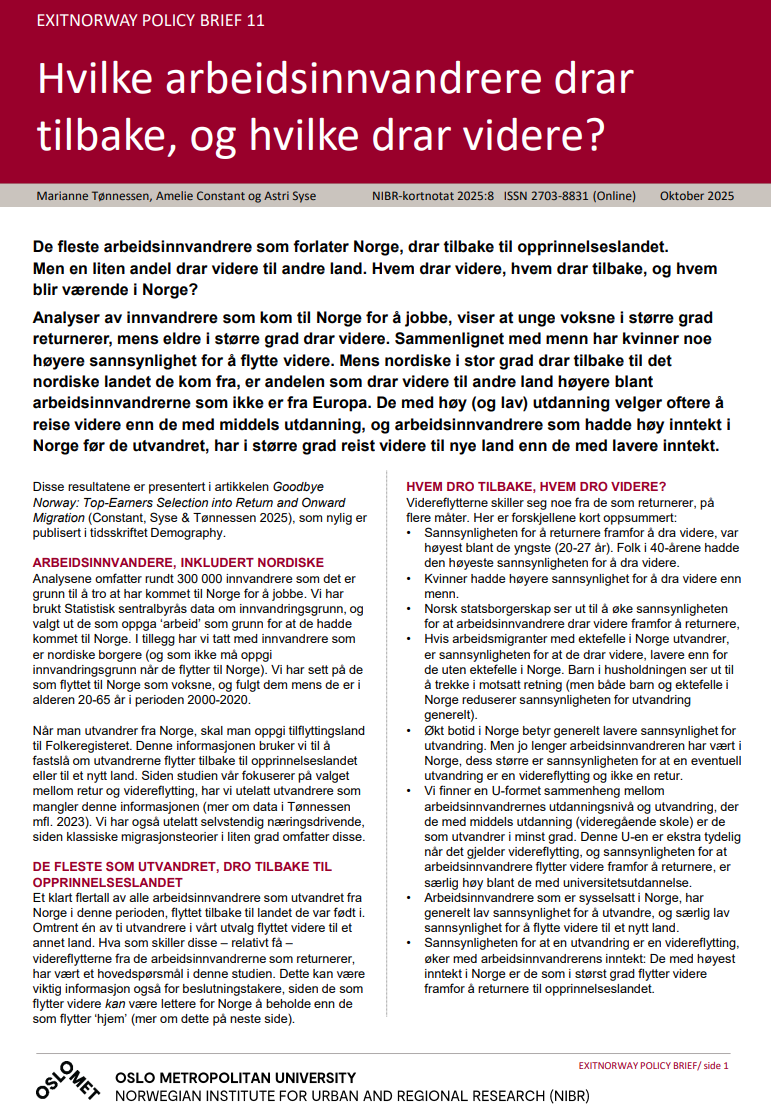
Which labor migrants return, and which move onwards? Policy brief (in Norwegian)
The policy brief Hvilke arbeidsinnvandrere drar tilbake, og hvilke drar videre? summarizes (in Norwegian) the main findings from the paper above (Goodbye Norway: Top-Earners Selection Into Return and Onward Migration). Read the policy brief here.

Why Exit? Exploring the Motivations of Displaced Ukrainians Leaving Norway (Central and Eastern European Migration Review 2025)
What prompts people to leave a welfare state and return to a home country in war? This paper examines why Ukrainians who fled to Norway due to the war voluntarily returned home or moved elsewhere. Using an exploratory research design, the study investigates how characteristics of Norwegian society, emotional ties and networks influence these decisions. The article applies a framework of individual, structural and policy-related factors to show how conditions in both the home and the host country interact. Theories on transnationalism and belonging highlight how returnees and onward movers maintain their connections to Norway. The findings reveal that social obligations, such as caring for relatives and children’s well-being, often outweigh security concerns. Among structural factors, a ‘paradox of leaving’ emerges, where aspects of the welfare state, such as Norway’s healthcare system, can motivate departure due to cultural differences in medical treatment. Limited job opportunities also drive exit, compounded by public discourse reinforcing ‘limiting beliefs’ about employment prospects. Finally, the study highlights how many displaced Ukrainians adopt a transnational approach, maintaining multiple attachments that include Norway. The paper can be read here.
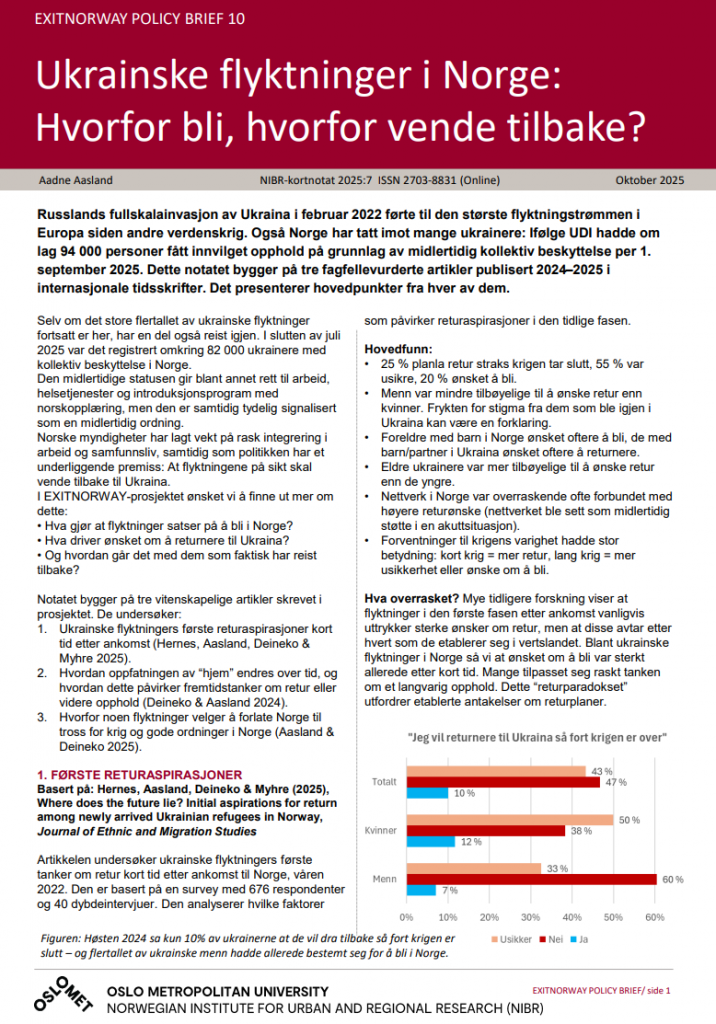
Ukrainian refugees in Norway: Why stay, why return?
Russia’s full-scale invasion of Ukraine in February 2022 led to the largest refugee influx in Europe since World War II. Norway has also taken in many Ukrainians: According to the UDI, around 94,000 people had been granted temporary collective protection as of 1 September 2025. The policy brief Ukrainske flyktninger i Norge:
Hvorfor bli, hvorfor vende tilbake? summarizes in Norwegian the main results from three EXITNORWAY papers on Ukrainan refugees in Norway, their thoughts about return and ‘home’, and why some of them do return to a country still in war. The policy brief can be read here.
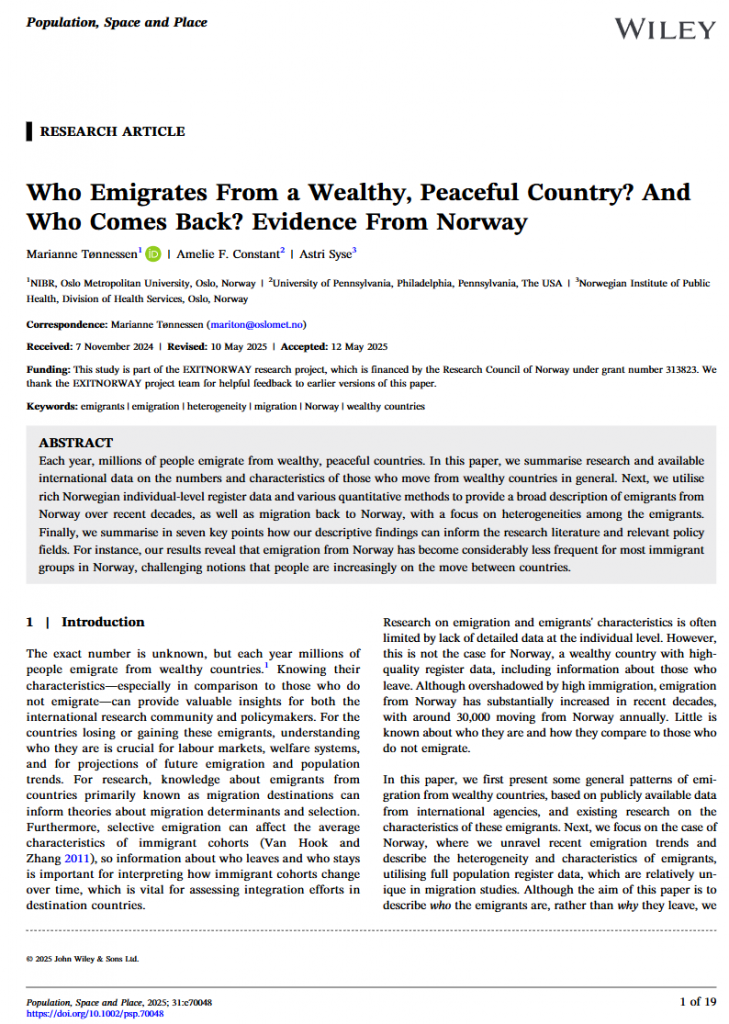
Who Emigrates From a Wealthy, Peaceful Country? And Who Comes Back? Evidence From Norway (Population, Space and Place 2025)
Each year, millions of people emigrate from wealthy, peaceful countries. In this paper, we summarise research and available international data on the numbers and characteristics of those who move from wealthy countries in general. Next, we utilise Norwegian register data to provide a broad description of emigrants from Norway over recent decades, as well as migration back to Norway, with a focus on heterogeneities among the emigrants. Finally, we summarise how our descriptive findings can inform the research literature and relevant policy fields. For instance, our results reveal that emigration from Norway has become considerably less frequent for most immigrant groups in Norway, challenging notions that people are increasingly on the move between countries.
The paper is published in the journal Population, Space and Place and can be found here (read-only version here).
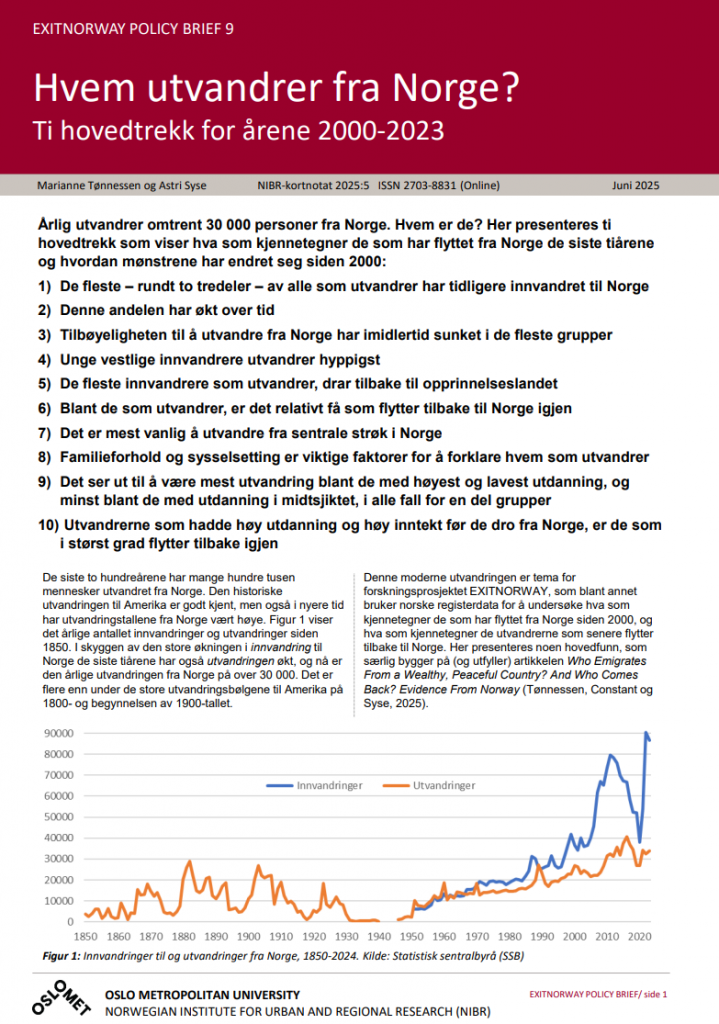
Who leaves Norway? Policy brief (in Norwegian) with ten main patterns
Building on the paper above (Who Emigrates From a Wealthy, Peaceful Country? And Who Comes Back? Evidence From Norway), this Policy brief presents ten main patterns characterizing those who have emigrated from Norway over the last decades. The Policy brief can be read (in Norwegian) here.
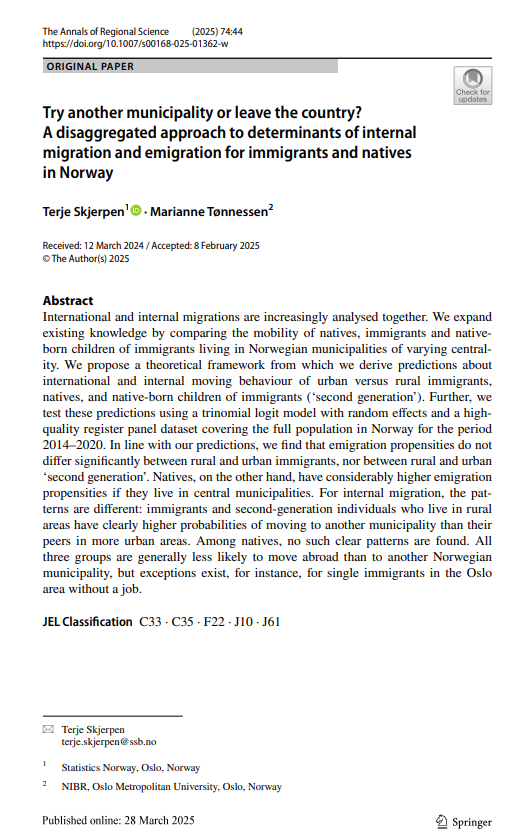
Try another municipality or leave the country? Internal migration and emigration among immigrants and natives in different parts of Norway (Annals of Regional Science 2025)
International and internal migrations are increasingly analysed together. In this paper, we expand existing knowledge by comparing the mobility of natives, immigrants and native-born children of immigrants living in Norwegian municipalities of varying centrality. We find that emigration propensities do not differ significantly between rural and urban immigrants, nor between rural and urban ‘second generation’. Natives, on the other hand, have considerably higher emigration propensities if they live in central municipalities. For internal migration, the patterns are different: immigrants and second-generation individuals who live in rural areas have clearly higher probabilities of moving to another municipality than their peers in more urban areas. Among natives, no such clear patterns are found. All three groups are generally less likely to move abroad than to another Norwegian municipality, but exceptions exist, for instance, for single immigrants in the Oslo area without a job. Read the full paper here.
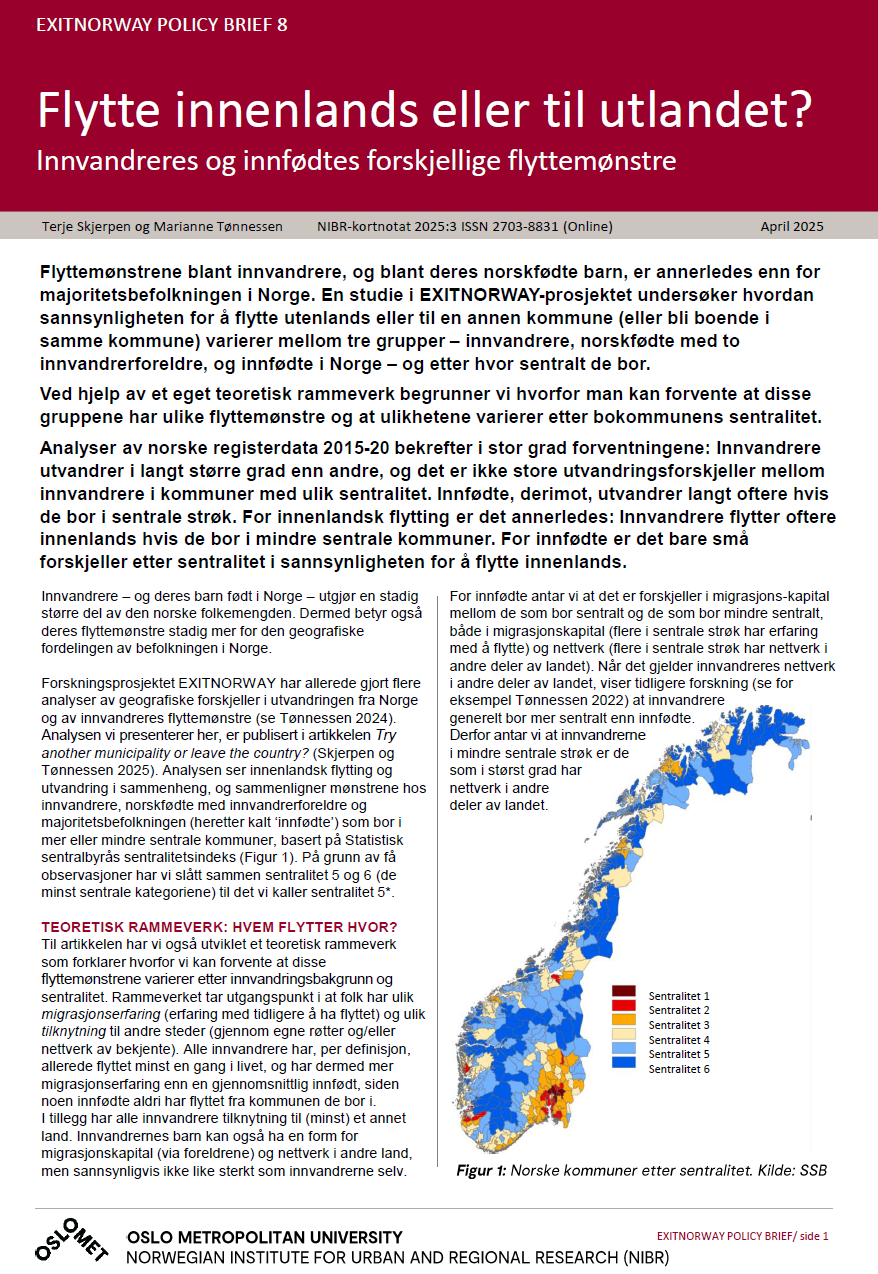
Policy brief on regional differences in immigrants’, natives’ and immigrants’ children’s choices between staying, emigrating or moving to another part of Norway
This policy brief summarizes (in Norwegian) the findings in the paper Try another municipality or leave the country? (see above). The migration patterns among immigrants, and among their Norwegian-born children, are different from those of the majority population in Norway. It also matter whether they live in a urban or rural place. Read the policy brief here.
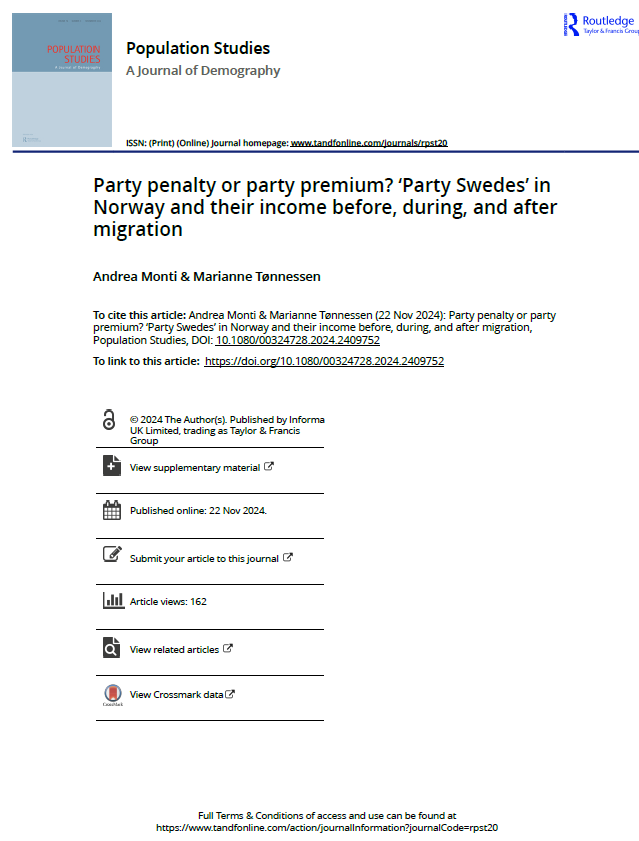
Party penalty or party premium? ‘Party Swedes’ in Norway and their income before, during, and after migration (Population Studies 2024)
Young adults moving between wealthy countries for work and adventure are an under-studied group of international migrants. In this paper, published in Population Studies, we use full population register data from Sweden and Norway to explore the so-called ‘Party Swedes’: young Swedes who emigrated to Norway in 2010–12. We follow them and track their median incomes before they left Sweden, during their stay in Norway, and after their return to Sweden. Our results suggest that in economic terms, the ‘party penalty’ clearly seems larger than the ‘party premium’. Even though the young Swedes earned well in Norway, this did not translate into higher incomes after returning to Sweden than among their non-migrating peers. These results add to the literature on migrants’ income premiums after return, focusing on liquid youth migration. Read the full paper here.
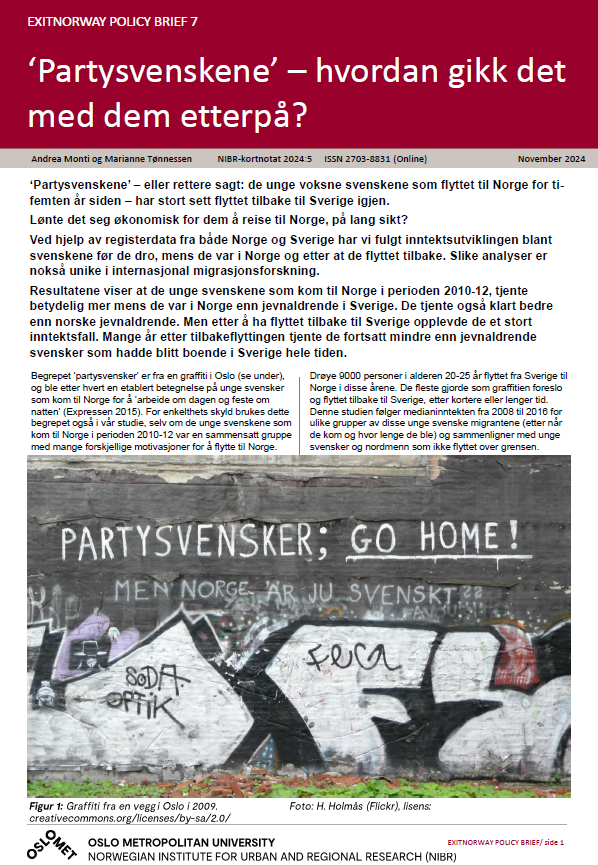
Policy brief on young Swedish migrants in Norway and what happened to their incomes
The young adult Swedes who moved to Norway fifteen years ago – also known as ‘Party-Swedes’ – have mostly emigrated back to Sweden again. Was it financially worthwhile for them to move to Norway, in the long term?
This policy brief summarizes (in Norwegian) the findings from the paper below. In short, these young Swedes experienced an economic penalty after return, compared to their peers who did not move to Norway. Read the policy brief here.
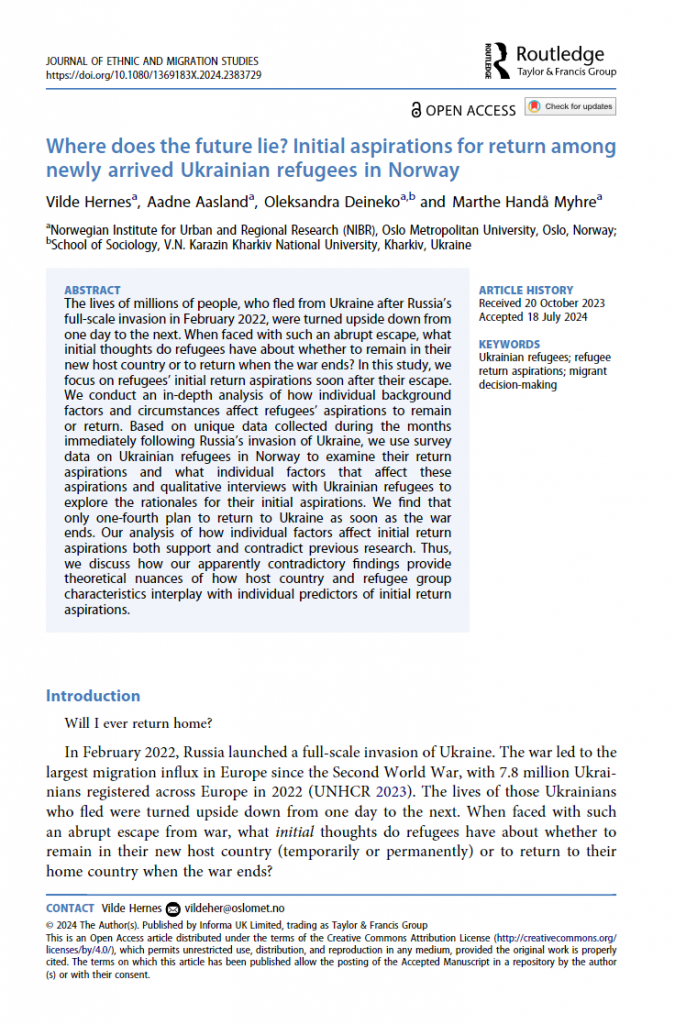
Did the newly arrived Ukrainian refugees plan to stay or return? (Journal of Ethnic and Migration Studies, 2024)
Based on unique survey data collected during the months immediately following Russia’s invasion of Ukraine, a new EXITNORWAY paper examines the return aspirations of newly arrived Ukrainian refugees in Norway. Only one-fourth planned to return to Ukraine as soon as the war ends. The paper is published in Journal of Ethnic and Migration Studies and can be read here.
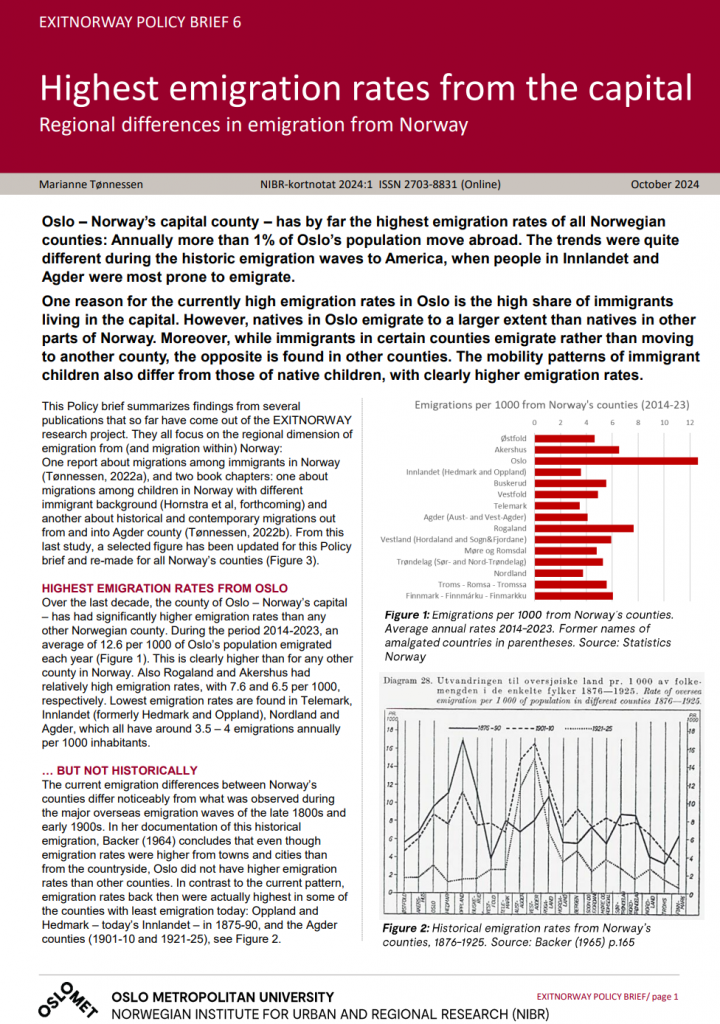
Policy brief on regional differences in emigration from Norway
The policy brief Highest emigration rates from the capital summarizes findings from several publications that have come out of the EXITNORWAY research project so far, focusing on the regional dimension of emigration from (and migration within) Norway:
– A report about migrations among immigrants in Norway, which can be read (in Norwegian) here
– A book chapter about historical and contemporary migrations out from and into Agder county, published (in Norwegian) here
– A book chapter about migrations among children in Norway with different immigrant backgrounds (Hornstra et al., forthcoming)
One result from these works is that Oslo – Norway’s capital county – has by far the highest emigration rates of all Norwegian counties. Read the policy brief here.
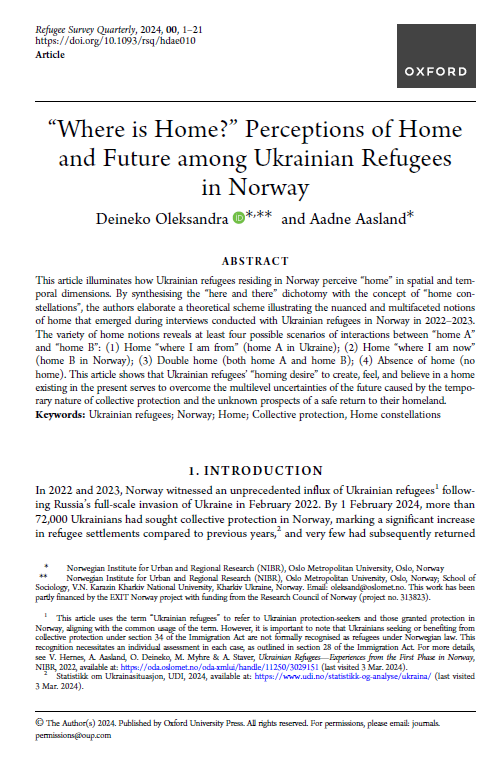
“Where is Home?” Perceptions of Home and Future among Ukrainian Refugees in Norway (Refugee Survey Quarterly 2024)
How do Ukrainian refugees residing in Norway perceive “home”? By synthesising the “here and there” dichotomy with the concept of “home constellations”, this EXITNORWAY paper elaborates a theoretical scheme illustrating the nuanced and multifaceted notions of home that emerged during interviews conducted with Ukrainian refugees in Norway in 2022–2023. The variety of home notions reveals at least four possible scenarios of interactions between “home A” and “home B”: 1) Home “where I am from” (home A in Ukraine); 2) Home “where I am now” (home B in Norway); 3) Double home (both home A and home B); 4) Absence of home (no home). The paper shows that Ukrainian refugees’ “homing desire” to create, feel and believe in a home existing in the present serves to overcome the multilevel uncertainties of the future caused by the temporary nature of collective protection and the unknown prospects of a safe return to their homeland. The paper is published in the journal Refugee Survey Quarterly (if you need help accessing the article, please contact Oleksandra Deineko)
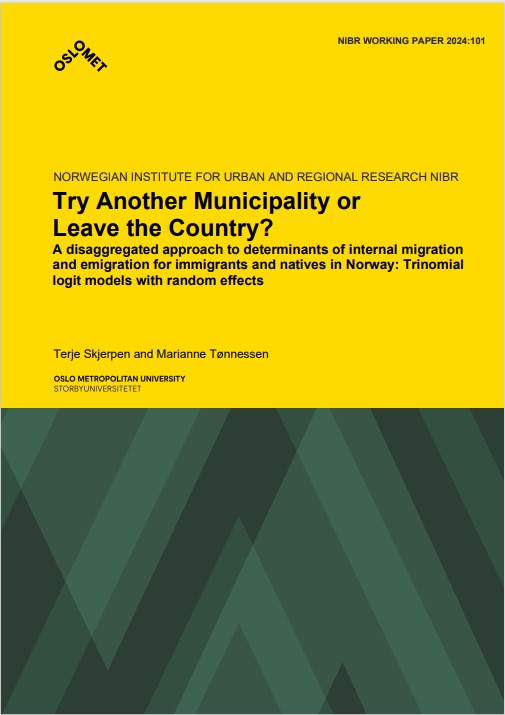
Try another municipality, or leave the country?
When moving from their municipality, some people emigrate whereas others choose another municipality within Norway. In this Working Paper, we explore how these patterns differ between immigrants and natives in rural and urban parts of Norway, using a trinomial logit model with random effects and a full-population panel data set. Our results show that immigrants are generally more mobile than natives, both within and out of Norway. The propensity to move abroad is lower than the propensity to move to another Norwegian municipality, also for most immigrants – but exceptions exist, for instance for single immigrants aged 35 in the Oslo area without a job. Read the working paper here (in English).
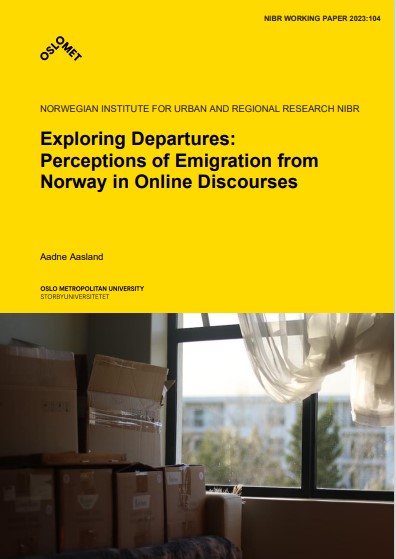
Social media perceptions on why people leave Norway
Why do around 30,000 persons annually leave Norway, a country often portrayed as ‘one of the happiest countries in the world’? A new report analyzes experiences and perceptions about factors that motivate emigration from Norway. The data sources are mainly comments to an online article about the EXITNORWAY project, supplemented with data from emails sent to the project leader. In the report, eight key factors explaining migration from Norway are identified. Economic considerations as well as Norwegian culture and lifestyle are highlighted as particularly important reasons for emigration. Read the report here.
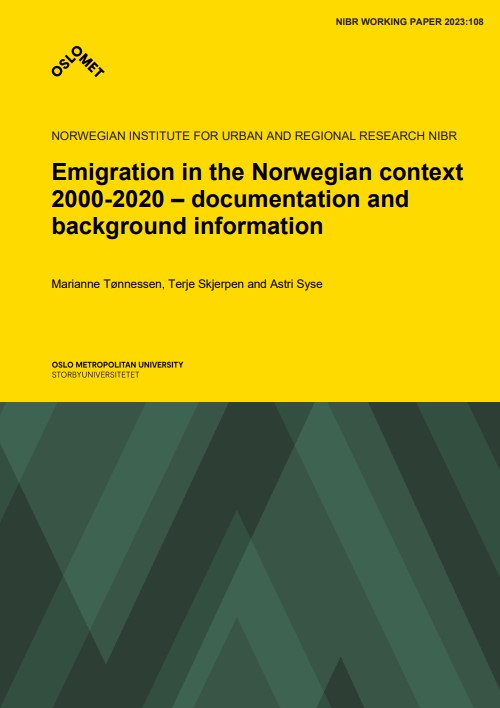
Documentation and background info in one place – and in English
The EXITNORWAY team has published a report which summarizes information relevant for statistical analyses and research on emigration from Norway in recent times. Much of this information has so far been available in Norwegian only and/or from multiple and separate sources. The report presents an overview of emigration in a Norwegian context with a focus on the data needed to understand this phenomenon, and it compiles much existing Norwegian information so it can also reach an English-speaking audience. Read the report here (English).
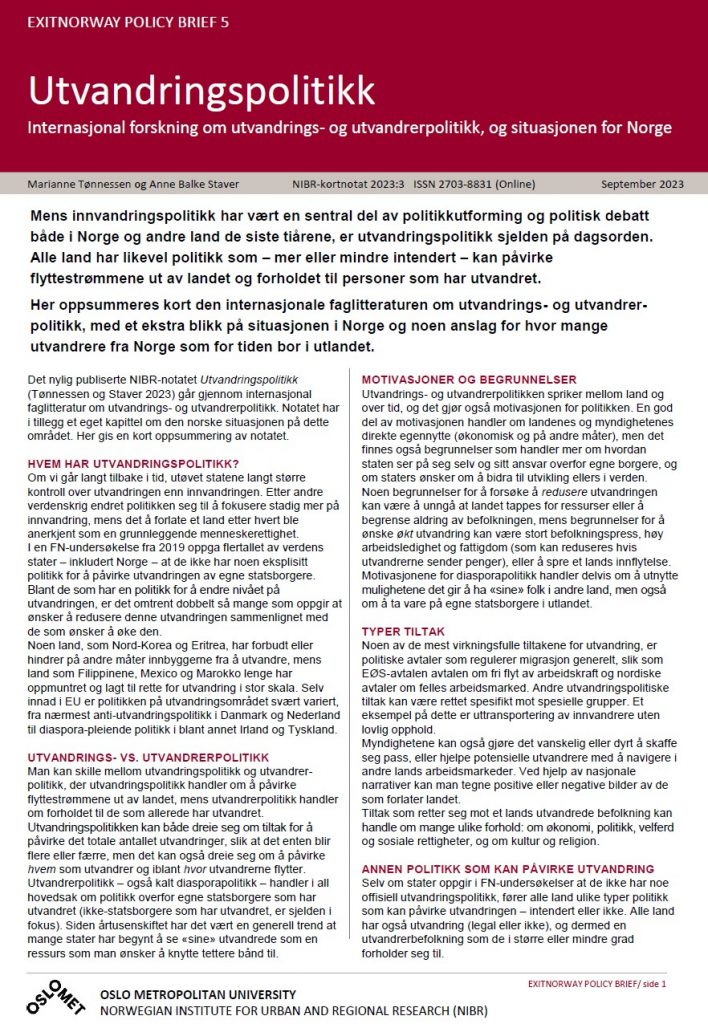
Policy brief about emigration policy
The policy brief Utvandringspolitikk (in Norwegian) is based on the report below, and discusses briefly which countries have emigration policies, the aims of these policies, as well as different types of political measures. It also briefly discusses emigration policies in the Norwegian context. Read the policy brief here (in Norwegian)
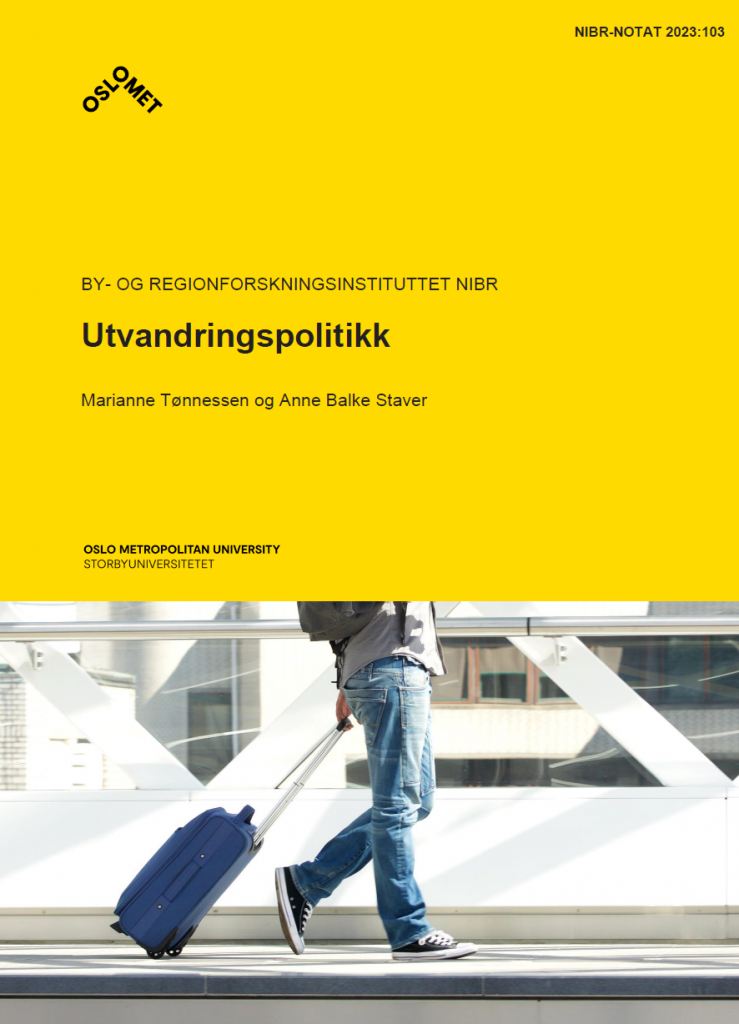
Report on emigration policy
The report Utvandringspolitikk (in Norwegian) goes through international research literature on emigration policy. It shows how migration policies changed around the second world war from focusing on emigration to focusing on immigration. Moreover, it discusses distinctions between emigration policy and emigrant (diaspora) policy, and gives an overview of motivations for such policies. A separate chapter discusses Norwegian policies in these fields, and presents some estimates of the number of emigrants from Norway currently living abroad. Read the report here (in Norwegian)
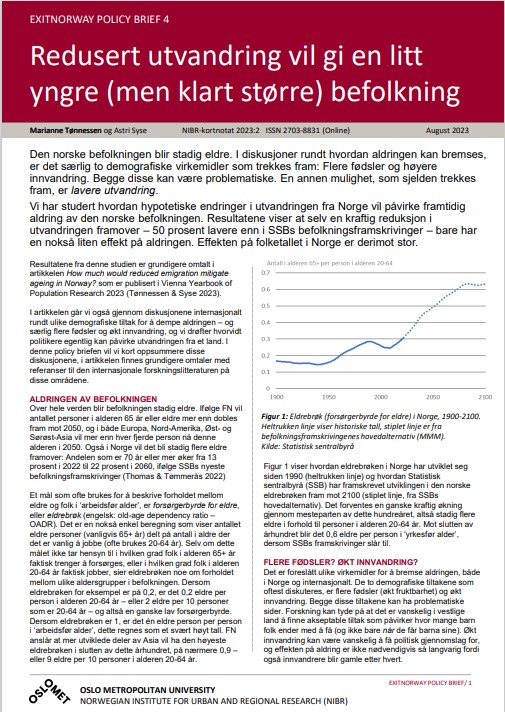
Policy brief about how emigration affects population ageing
The policy brief Redusert utvandring vil gi en litt yngre (men klart større) befolkning (in Norwegian) is based on the paper below, and shows how reduced emigration would affect the future population size and ageing in Norway. It also discusses the extent to which reduced emigration could be a ‘solution’ to the Norwegian ageing challenges. Read the policy brief here (in Norwegian)
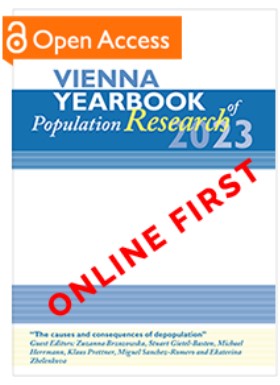
Changed emigration as an anti-ageing formula (Vienna Yearbook of Population Research 2023)
Population ageing is a topic of great concern in many countries, but changed emigration is rarely mentioned as a possible remedy against ageing. In this paper we explore what effect different scenarios of reduced emigration would have on future population ageing in Norway, and discuss the realism of these scenarios. The paper is published in Vienna Yearbook of Population Research 2023 and can be read here (in English).
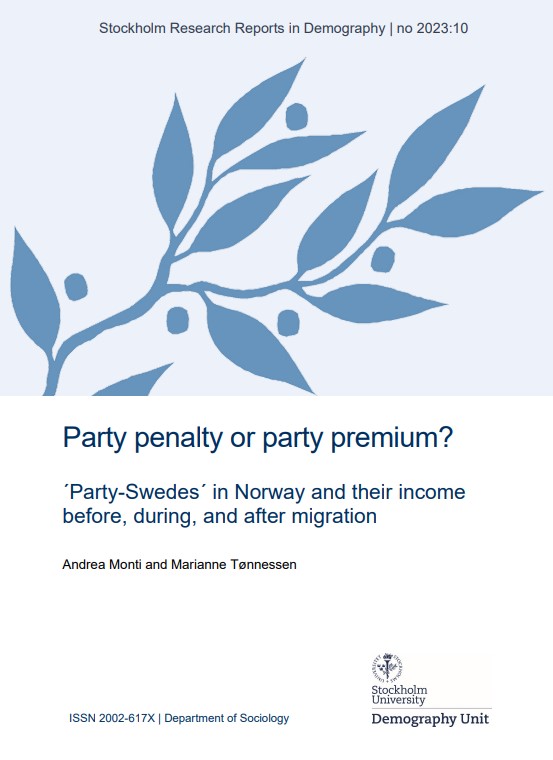
‘Party-Swedes’ before, during and after their stay in Norway
Young adults crossing borders between wealthy countries for work and adventure is an under-studied group of international migrants. We use a unique combination of register data from Sweden and Norway to follow the so called ‘Party-Swedes’ – young people emigrating from Sweden in 2010-12 to work in Norway – and their median income before leaving Sweden, during their stay in Norway and after possible return to Sweden. In economic terms, the ‘party penalty’ seems clearly larger than the ‘party premium’. This work has been submitted for peer-reviewed publishing, but can already now be read as a Stockholm Research Report in Demography.
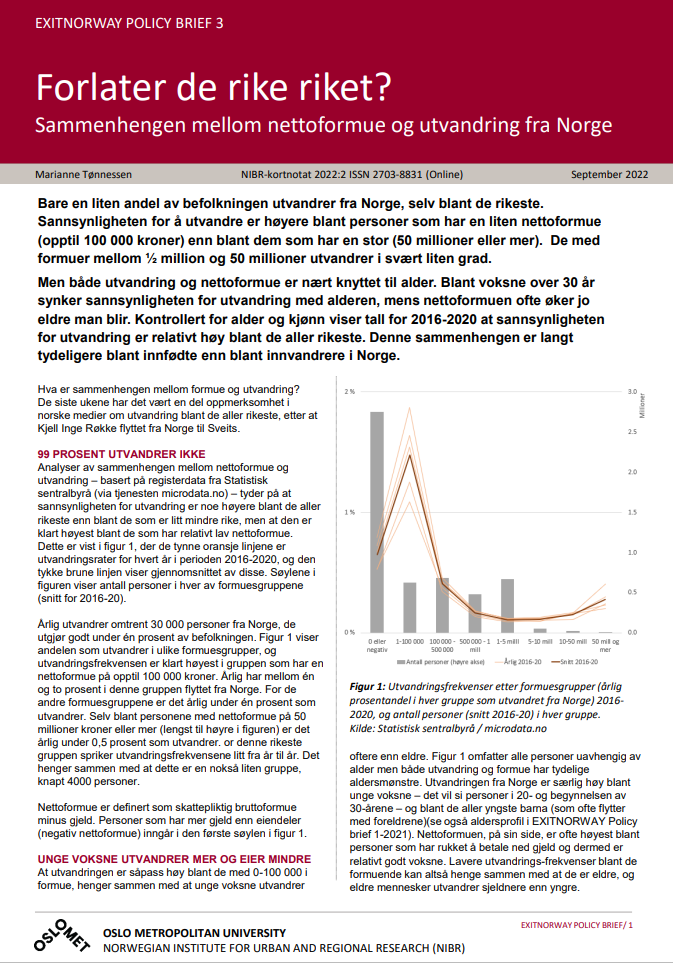
Policy brief on emigration among Norway’s wealthiest
Emigration among the wealthiest has been a topic in the Norwegian public debate, and this new EXITNORWAY policy brief examines emigration among people in different wealth groups. The results show that 1) most people do not emigrate, even among the wealthiest, 2) emigration propensities are somewhat higher among people with very high net wealth (NOK 50 mill or more) compared to them with somewhat lower wealth, and 3) this relationship is less clear among immigrants than for natives. The policy brief can be read here (in Norwegian)
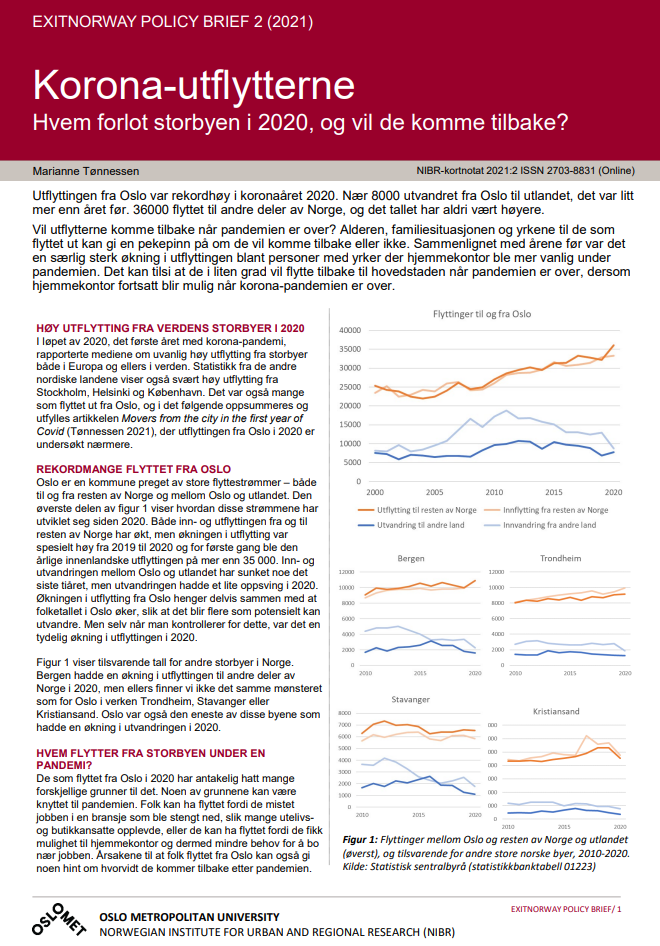
Policy brief on the out-movers from Oslo in 2020
The policy brief Korona-utflytterne. Hvem forlot storbyen i 2020, og vil de komme tilbake? (in Norwegian) is based on the paper below, and shows characteristics of out-movers from Oslo in 2020 which may indicate whether the movers will come back after the pandemic. It also adds some more results on topics such as the emigration of Swedes from Oslo. Read the policy brief here (in Norwegian)
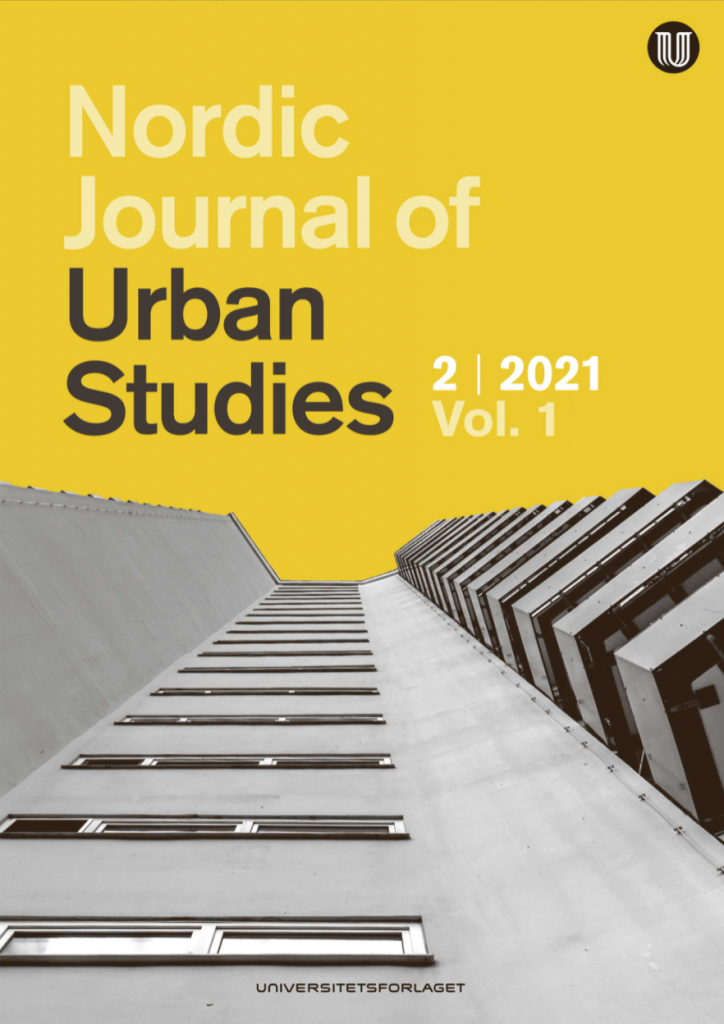
Movers from the city in the first year of Covid (Nordic Journal of Urban Studies 2021)
Out-migration was high from many cities across the world in 2020. Some moved abroad, some moved to other parts of the country. In the paper Movers from the city in the first year of Covid, EXITNORWAY researcher Marianne Tønnessen examines the characteristics of those who moved away from Oslo in 2020. To a greater extent than in the preceding years, movers in 2020 had jobs where teleworking could be possible. For those who emigrated to another country, no teleworking effect was found. Read the paper here (in English)
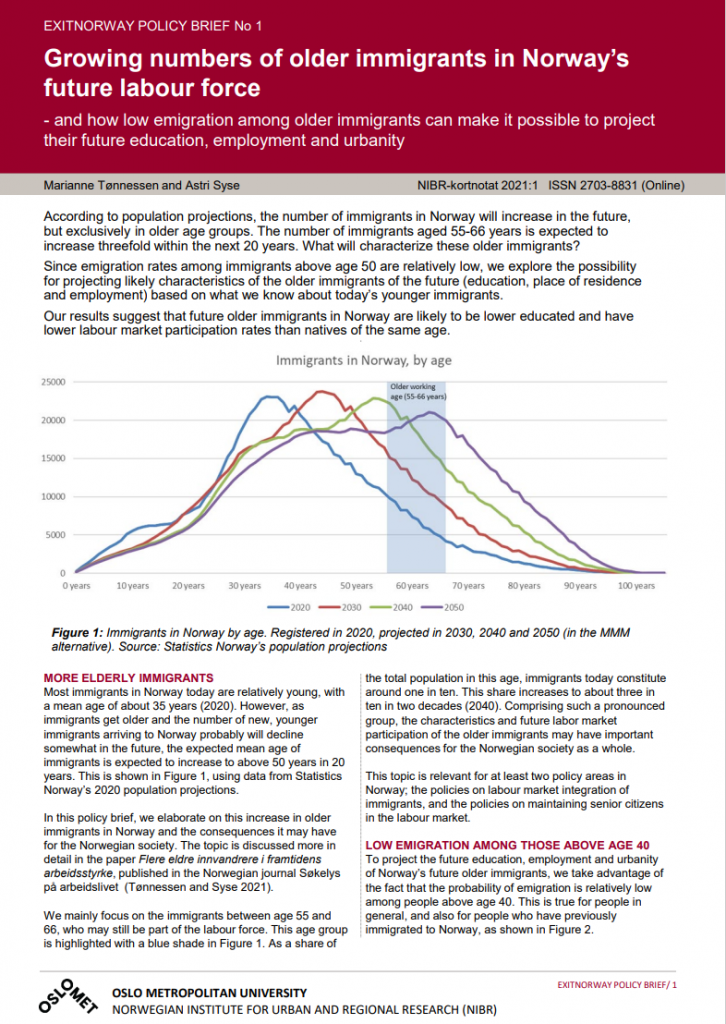
Policy brief on emigration and the future older immigrants in Norway’s labour force
The policy brief Growing numbers of older immigrants in Norway’s future labour force and how low emigration among older immigrants can make it possible to project their future education, employment and urbanity shows how low emigration in older age groups makes it possible to project likely characteristics of the older immigrants in Norway’s future labour force, based on what we know about today’s younger and older immigrants’ education, place of residence and employment. Read the policy brief here (in English)
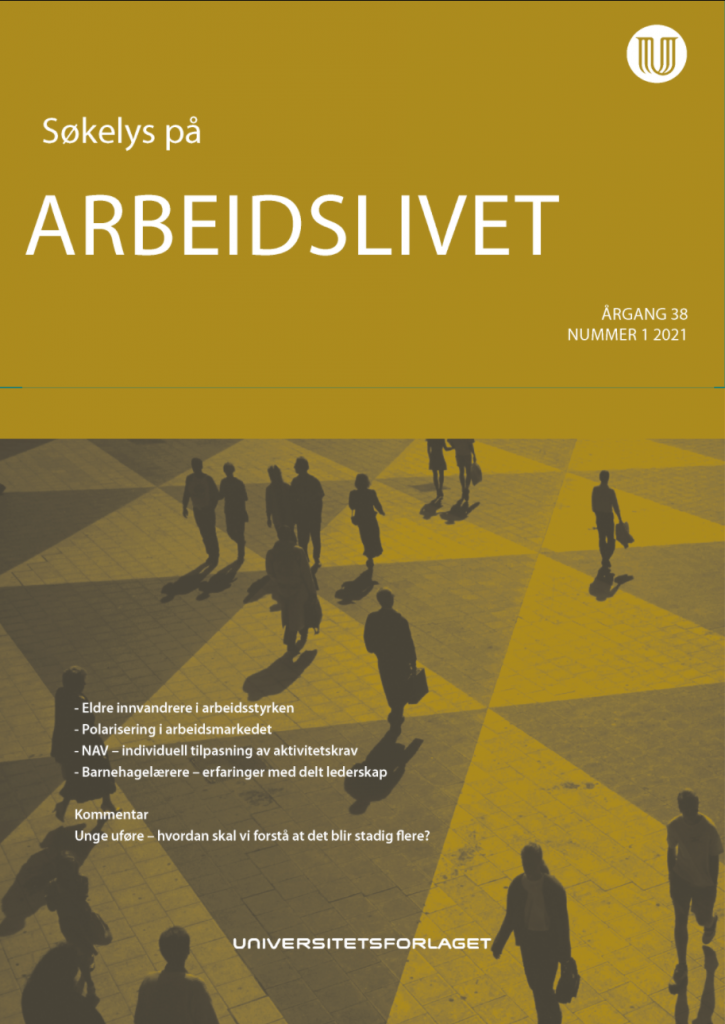
Flere eldre innvandrere i framtidens arbeidsstyrke (Søkelys på arbeidslivet 2021)
In the paper Flere eldre innvandrere i framtidens arbeidsstyrke EXITNORWAY’s researchers Astri Syse and Marianne Tønnessen show how low emigration in older age groups makes it possible to project likely characteristics of Norway’s future older immigrants (e.g. origin, length of stay, gender, education, place of residence and employment) and discusses potential labour market implications and societal consequences. Read the paper here (in Norwegian)